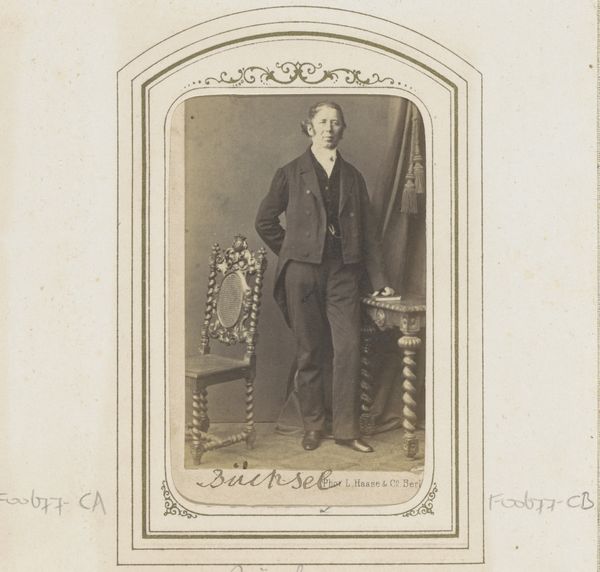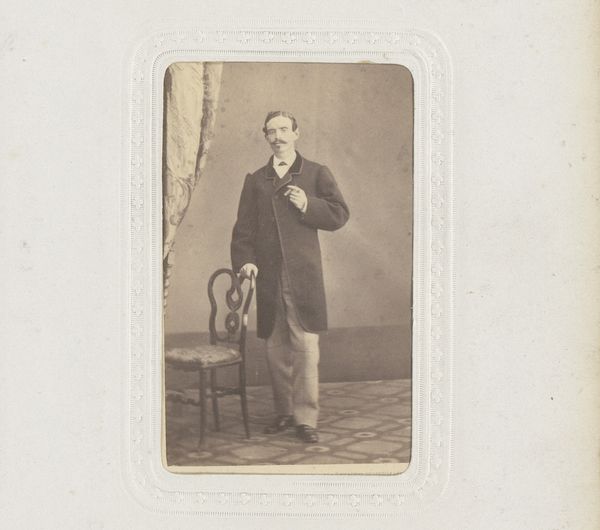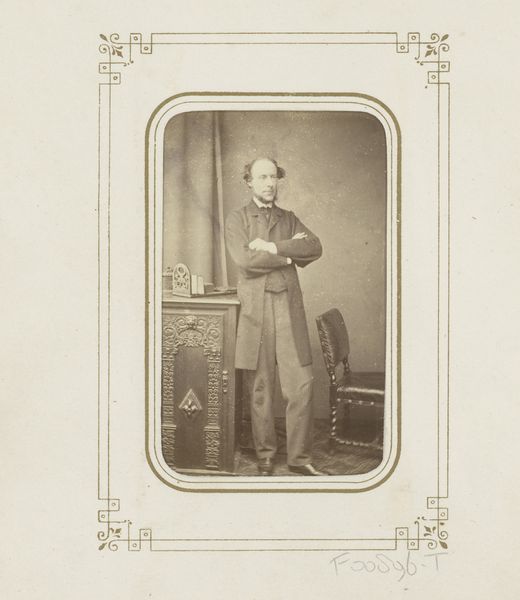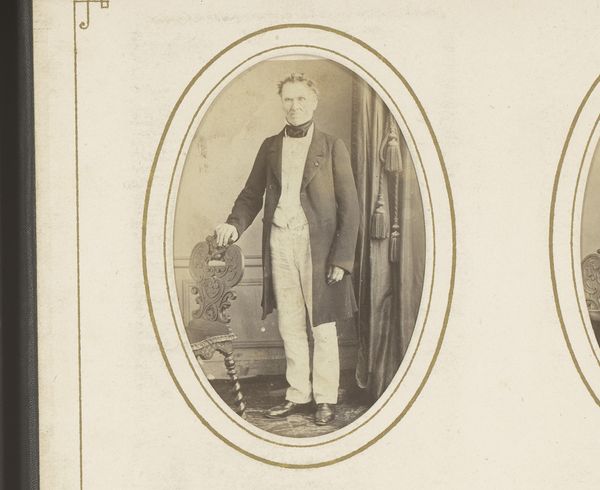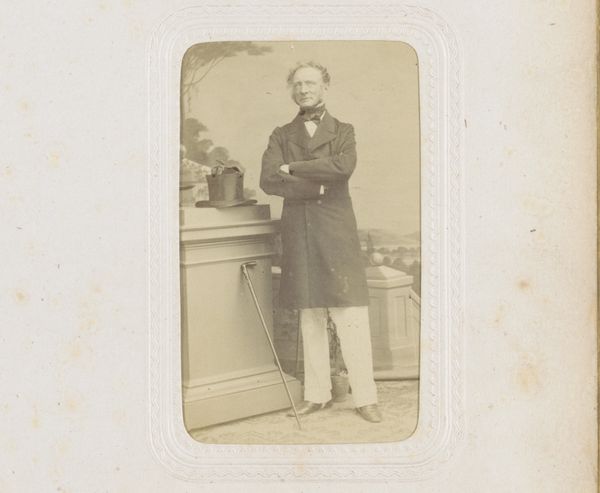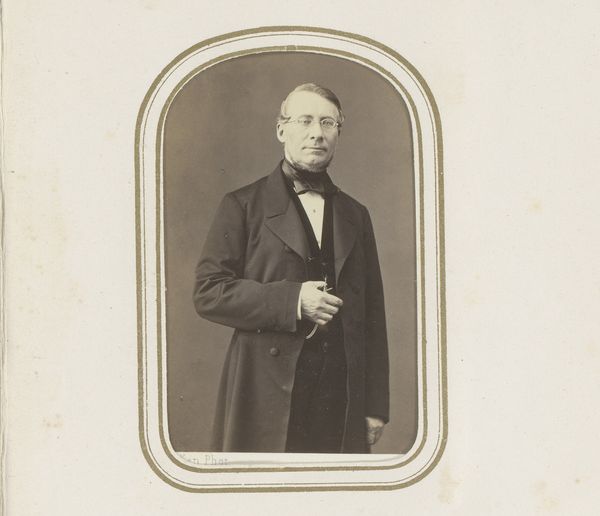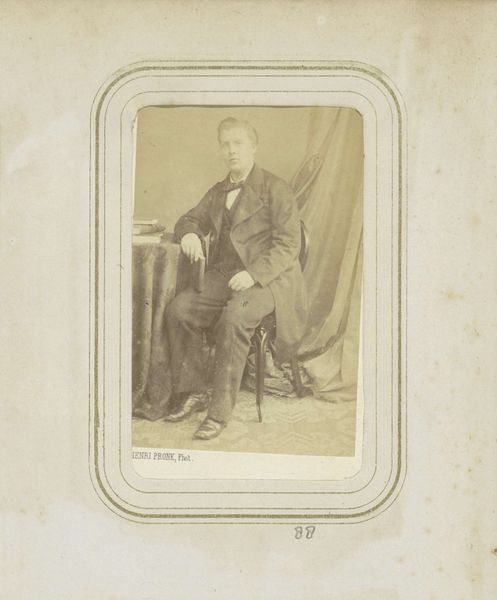
print, photography
#
portrait
#
toned paper
#
16_19th-century
# print
#
photography
#
men
Dimensions: 8.9 × 5.7 cm (image/paper); 10.5 × 6.3 cm (mount)
Copyright: Public Domain
Editor: Here we have John Jabez Edwin Mayall’s print, “Lord Palmerston,” created in 1861 using photography. It feels very composed and formal, as you might expect of a portrait from this time. What strikes you when you look at this image? Curator: I see a powerful representation of Victorian masculinity and political authority. But, how do we unpack this image beyond a simple portrait? Consider the timing: 1861, amidst the immense social changes brought by the Industrial Revolution and anxieties regarding British colonialism. Editor: I hadn’t thought about it that way. So, how does that relate to Palmerston? Curator: Palmerston was a key figure in shaping Victorian foreign policy, often associated with aggressive expansionism. Now, look at the image again. His pose isn’t aggressive, yet his gaze projects an unwavering conviction. He leans casually, almost possessively, on what appears to be a classical balustrade. What does that detail signify to you? Editor: Maybe a claim to a lineage of power or authority? Curator: Precisely! And the carefully draped curtain behind him… It all speaks to a constructed image of leadership, steeped in traditional symbols, even as Britain was rapidly transforming. This photo isn’t just about capturing his likeness; it’s about solidifying a specific image of British power, at home and abroad, and naturalizing a new type of globalized economy. Editor: That makes me see it in a completely different light. It's less about the individual and more about the projection of power onto a figurehead. Curator: Exactly. And photography itself was a relatively new tool then, offering unprecedented opportunities for shaping public perception. So this isn’t just a portrait, but an early example of how photography can be deployed in the service of political messaging. Editor: Thanks, I now understand better the power of context and how it changes how we understand a simple portrait. Curator: And I was reminded to consider the deliberate and strategic ways photography served to construct an identity of British Imperialism, which had severe implications that we still see today.
Comments
No comments
Be the first to comment and join the conversation on the ultimate creative platform.


